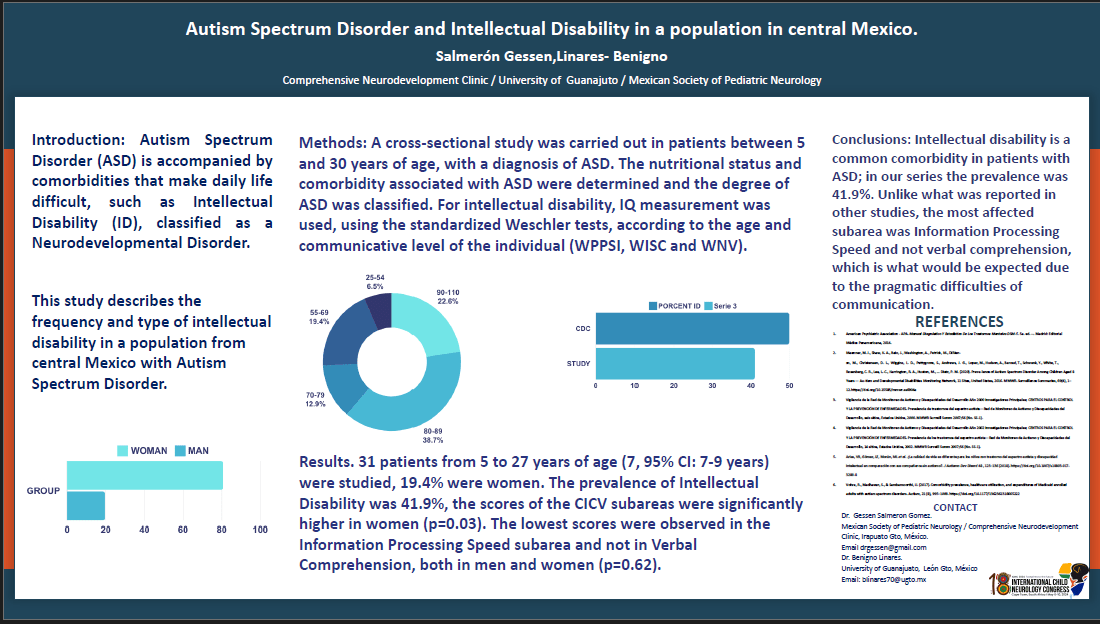Autism Spectrum Disorder And Intellectual Disability In A Population Of Central Mexico.
Introduction: Autism Spectrum Disorder (ASD) is accompanied by comorbidities that make daily life difficult, such as Intellectual Disability (ID), classified as a Neurodevelopmental Disorder. This study describes the frequency and type of intellectual disability in a population from central Mexico with Autism Spectrum Disorder. Methods: Methods: We carried out a cross-sectional study in patients between 5 and 30 years of age, with a diagnosis of ASD. Nutritional status and comorbidity associated with ASD were determined and the degree of ASD was classified. For intellectual disability, the measurement of IQ was used, using Weschler's standardized tests, according to the age and communicative level of the individual (WPPSI, WISC and WNV). Results. Thirty-one patients from 5 to 27 years of age (7, 95% CI: 7-9 years) were studied, 19.4% were women. The prevalence of Intellectual Disability was 41.9%, the CICV subarea scores were significantly higher in women (p=0.03). The lowest scores were observed in the Information Processing Speed subarea and not in Verbal Comprehension, both in men and women (p=0.62). Conclusions: Intellectual disability is a frequent comorbidity in patients with ASD, in our series the prevalence was 41.9%. Unlike what has been reported in other studies, the most affected subarea was Information Processing Speed and not verbal comprehension, which is what would be expected due to the pragmatic difficulties of communication.
Salmeron Gessen
Integral Neurodevelopment Clinic
Mexico
Linares-Segovia Benigno
Universidad de Guanajuato
Mexico
